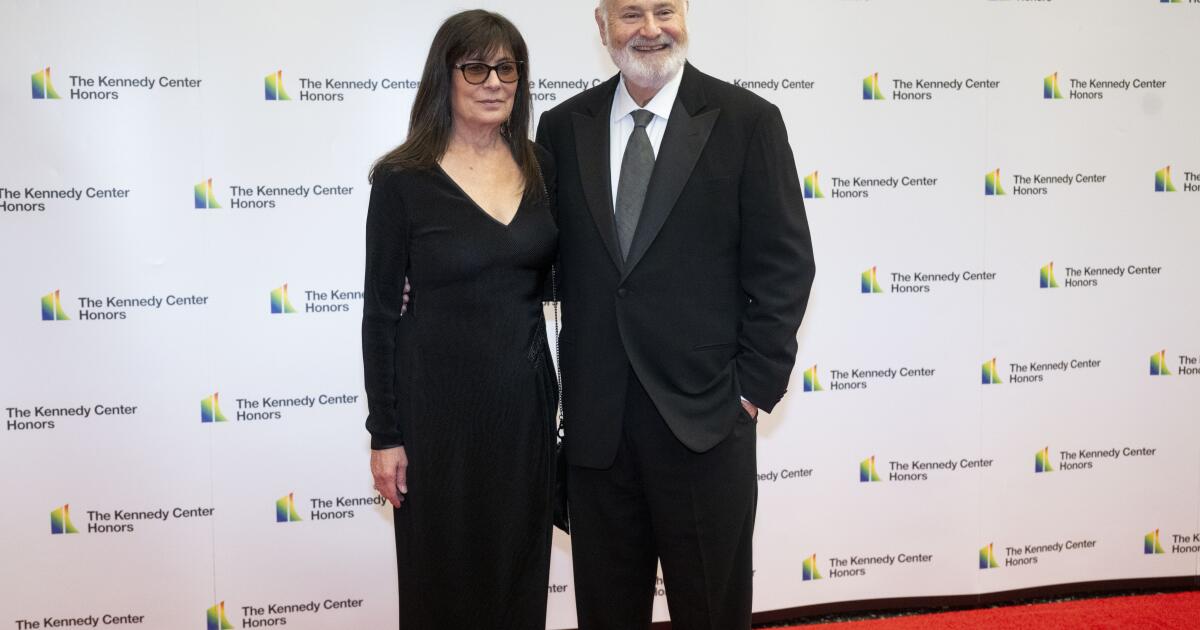Michele Singer Reiner, photographer and producer, dead at 70
Michele Singer Reiner, who was killed along with her husband, filmmaker Rob Reiner, on Sunday at their home in Los Angeles, was a photographer who moved from still images into filmmaking and later into producing, with work that blended performance, politics and persuasion. She was 70.
Singer Reiner was gigging as a photographer in the late 1980s, visiting film sets as part of her income. One of those sets was “When Harry Met Sally …,” the romantic comedy Rob Reiner was directing in New York, a film that would go on to become one of the era’s defining hits. Having divorced actor and director Penny Marshall eight years earlier, Reiner said he noticed his future wife across the set and was immediately drawn to her.
Scripted by Nora Ephron, the film was originally written to leave its central couple, played by Meg Ryan and Billy Crystal, separate, crossing paths over the years without ending up together. But after meeting Singer Reiner, Reiner reconsidered. He rewrote the final scene so the characters reunite and marry, an ending that helped make the film a beloved classic.
The two married in 1989, months after the film’s release. They went on to have three children: Jake, born in 1991; Nick, born in 1993; and Romy, born in 1997.
Hours after the couple were found dead at their Brentwood home, Nick Reiner — who had struggled for years with substance-abuse issues — was taken into custody and booked into Los Angeles County jail on suspicion of murder, according to jail records. He had spoken publicly about getting sober by 2015, when he worked with his father on “Being Charlie,” a semi-autobiographical film about addiction and recovery that Rob Reiner directed and Nick co-wrote.
After their marriage, Singer Reiner worked on several of Reiner’s films, as a special photographer on “Misery,” his 1990 adaptation of the Stephen King novel, among others. Their marriage also became a working partnership. As Reiner’s career expanded beyond studio films into documentaries and political projects, Singer Reiner — who earlier in her career had photographed the cover of Donald Trump on the photo of his 1987 bestseller “The Art of the Deal” — was closely associated with those efforts, collaborating on films and advocacy campaigns that increasingly overlapped.
Their civic strand emerged early. In the 1990s, she and Reiner started the I Am Your Child project, an effort aimed at raising awareness about early childhood development and expanding access to support services for parents.
The initiative coincided with Reiner’s emergence as one of Hollywood’s most prominent political voices. He was a founding board member of the American Foundation for Equal Rights, which led the legal fight to overturn Proposition 8, the California ballot measure that banned same-sex marriage. He was also a central figure behind Proposition 10, the California Children and Families Initiative, a landmark policy that created an ambitious statewide early childhood development program.
In the last decade, Singer Reiner moved more fully into producing. Her credits included such Reiner-directed projects as “Shock and Awe” (2017), “Albert Brooks: Defending My Life” (2023) and this year’s “Spinal Tap II: The End Continues,” as well as “God & Country,” a 2024 documentary examining Christian nationalism in the United States.
As news of their deaths spread, tributes emphasized the Reiners’ shared public life. Laurie David, an environmental activist and documentary filmmaker who was a close friend of the couple, wrote on Threads that “Rob & Michele — always referred to as Rob & Michele — were an extraordinary couple who worked side by side to make the world a safer, fairer and more just society.”
Former President Bill Clinton and former Secretary of State Hillary Clinton also issued a joint statement calling the couple’s deaths “heartbreaking” and pointing to what they described as the Reiners’ “active citizenship” in defense of “inclusive” democracy. “They were good, generous people who made everyone who knew them better,” the statement said.
Former House Speaker Nancy Pelosi called the loss “devastating,” writing that while Reiner was creative, funny and beloved, Singer Reiner was his “indispensable partner, intellectual resource and loving wife” in all of their endeavors.
